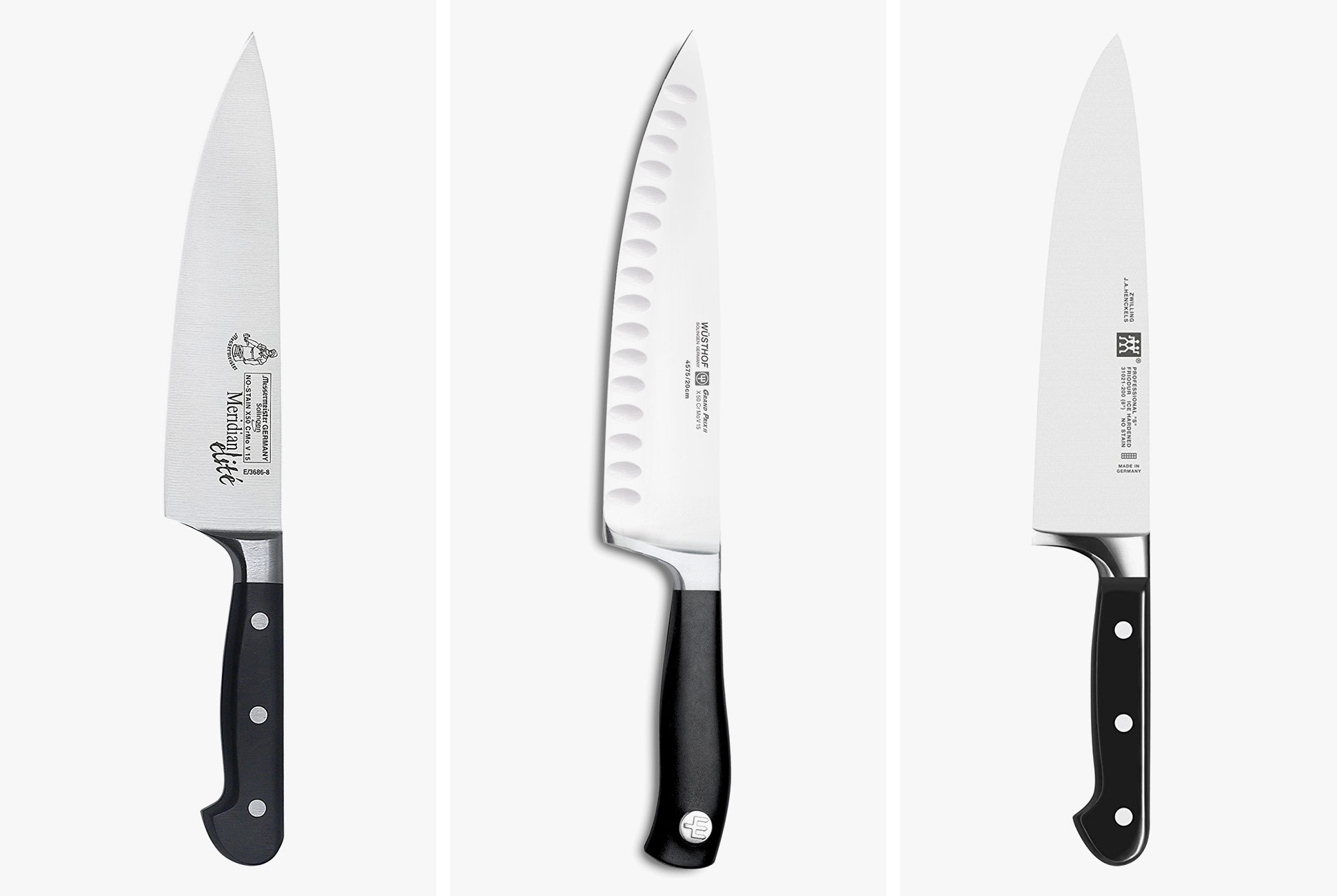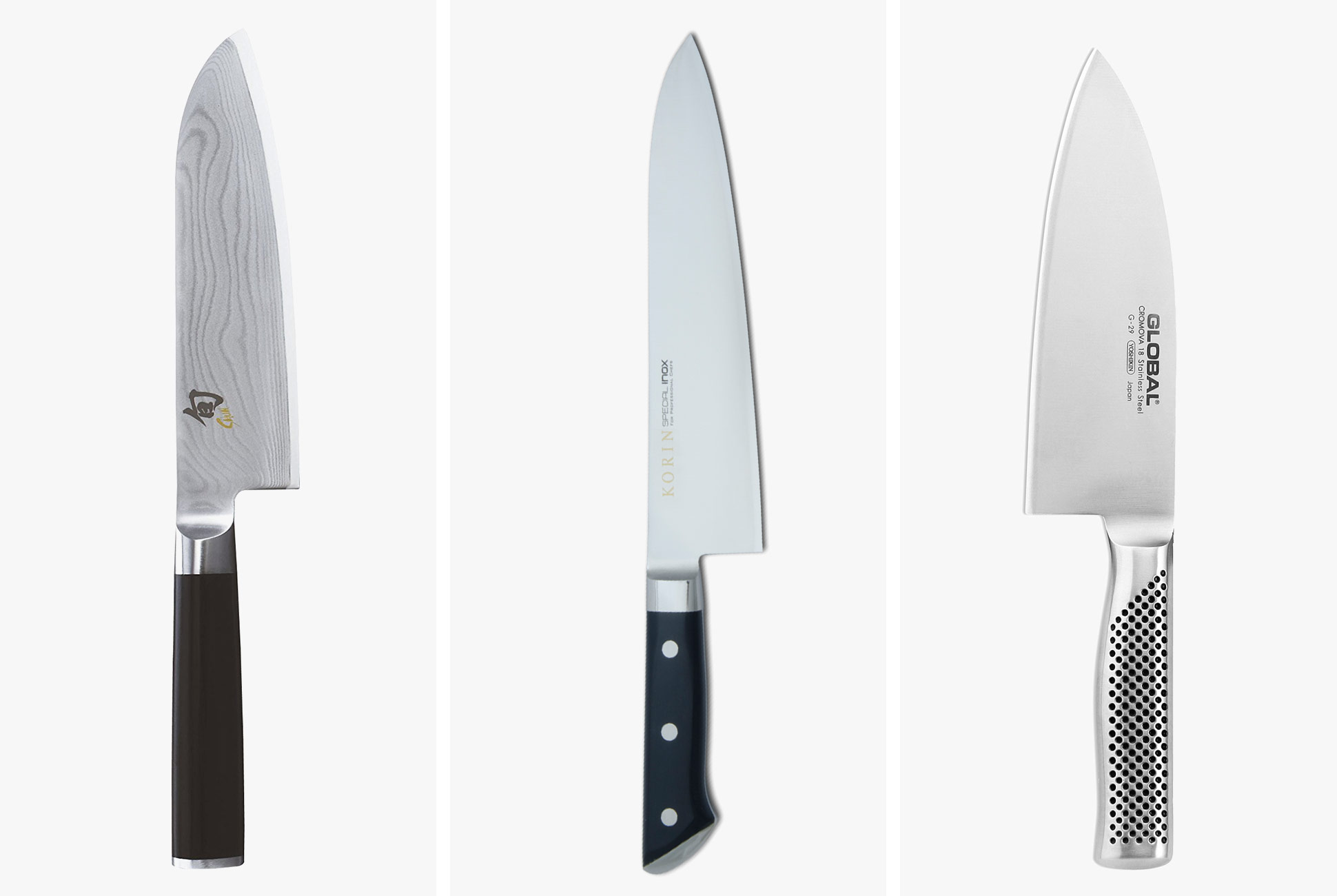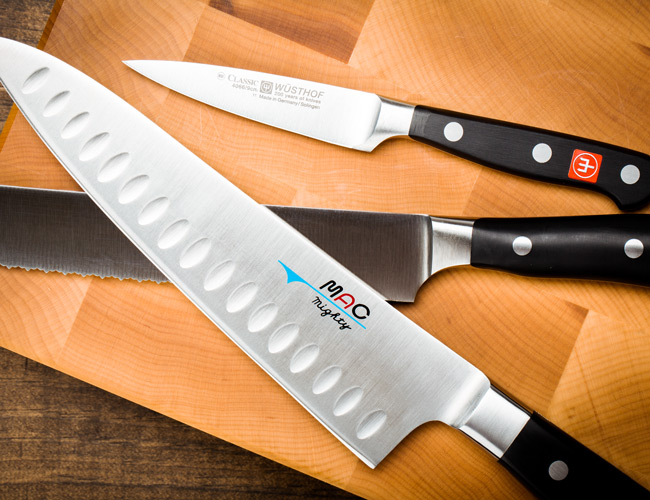Each kitchen knife serves a distinct purpose. Paring knives and boning knives are used to achieve very different ends, as are bread knives and steak knives. But beyond silhouette, the steel from which a knife is forged also shapes its intended use. Most kitchen knives fall into one of two categories: German- or Japanese-made. The difference between the two lies primarily in steel hardness and edge angle, which, in turn, ladder up to distinctions in durability and intended function. When it comes to kitchen knives, however, the more hard-wearing option isn’t necessarily the better choice.
Steel: Steel is an alloy composed of iron and carbon. The amount of carbon in a piece of steel directly correlates to hardness and inversely correlates to durability. Due to a difference in forging techniques, Japanese steel blades contain much more carbon than German blades, making them harder, but also more brittle. Because Western-style steel is relatively softer, it’s capable of holding an edge longer and doesn’t need to be sharpened quite as often as Japanese blades do.
Edge: Japanese knife blades are thinner than their German counterparts, allowing for a sharper edge — typically in the range of 15–16 degrees, compared to 20 degrees in Western-style knives. While German blades are typically finished with a machine, Japanese blades are almost always hand-honed and hand-refined. The edge of most Western-style blades is curved to allow for rocking cuts, while Japanese blades are straighter in order to facilitate clean, precise slices.
Construction: Most German knives have a full-tang construction, which means that a single piece of steel runs from blade to butt. Japanese blades taper inside the handle, making for a lighter, front-weighted knife to enable more controlled movements.
Function: Japanese kitchen knives are precision cutting tools, designed to slice first and foremost. German blades are more versatile, used for chopping, cutting and slicing; their multi-purpose nature and increased durability go hand-in-hand.
German (Western-Style) Kitchen Knives

With a bolster for a controlled, comfortable grip and full tang construction, Western-style chef’s knives are weighty and durable. While most blade faces are flat, those with ridges (like the Wüsthof one pictured here) are designed to keep food from sticking to the knife while chopping.
8-Inch Elite Chef’s Knife by Messermeister $86
Grand Prix 8-Inch Chef’s Knife with Hollow Edge by Wüsthof $130
Twin Pro 8-Inch High Carbon Chef’s Knife by ZWILLING J.A. Henckels $112
Japanese Kitchen Knives

Gyuto and Santoku are the least specialized (read: most general-purpose) styles in the Japanese knife arsenal. Though they most closely resemble Western-style chef’s knives — with wide, wedge-like silhouettes that expand their utility — they have thinner blades, harder steels and sharper edges than their Western counterparts, allowing for more precise cutting.
7-Inch Santoku Knife by Shun $120
Special Inox 10.5-Inch Gyuto Knife by Korin $288
7-Inch Slicing Knife by Global $150
The Only 3 Knives You Need in Your Kitchen
Cleaning house? Don’t neglect your kitchen drawers. When it comes to knives, less is more. Read the Story





